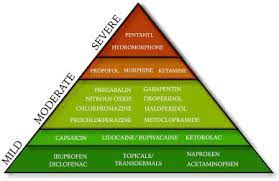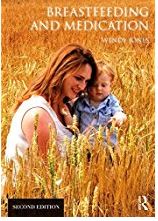Morphine is an opioid analgesic (painkiller) prescribed when paracetamol and ibuprofen provide inadequate pain relief. Other opioid painkillers include codeine (not recommended in breastfeeding but see https://breastfeeding-and-medication.co.uk/fact-sheet/accidental-dose-of-codeine-when-breastfeeding ), dihydrocodeine ( see https://breastfeeding-and-medication.co.uk/fact-sheet/dihydrocodeine-and-breastfeeding) , oxycodone ( see https://breastfeeding-and-medication.co.uk/fact-sheet/oxycodone-and-breastfeeding) and Tramadol (see https://breastfeeding-and-medication.co.uk/fact-sheet/tramadol-and-breastfeeding) See also https://breastfeeding-and-medication.co.uk/fact-sheet/pain-relief-when-breastfeeding. All of these drugs can cause constipation so should be prescribed with a suitable laxative ( https://breastfeeding-and-medication.co.uk/fact-sheet/constipation-laxatives-and-breastfeeding) .
Therapeutic doses of morphine in the breastfeeding mother are unlikely to be harmful to baby in short term e.g. post-operatively because morphine is subject to extensive first pass metabolism. Respiratory difficulties may be important to be aware of with premature babies or others at risk of apnoea. The oral absorption of morphine is very poor and first pass metabolism is high. It is therefore frequently used post caesarean section as Oramorph solution.
Robieux et al. (1990) reported a single case of an infant who was breastfed while his mother was receiving low doses of morphine. Morphine concentration in his serum was in the analgesic range (4 ng per millilitre), while concentrations in the milk varied substantially from 10–100 ng per millilitre. The authors calculated that the baby had received 0.8 to 12% of maternal dose. Oberlander et al. (2000) studied one baby born to a mother who received morphine intra-thecally during and after pregnancy. Minimal levels were determined in breastmilk over 7 weeks and the infant’s development and feeding up to 7 months were normal. Baka et al. (2002) also studied women receiving patient controlled analgesia post-caesarian section and noted that the concentrations of morphine in breastmilk were very small (<1 to 274 ng per millilitre) with a m/p ratio <1. Relative infant dose quoted as 9.1% (Hale online access).
Therapeutic doses unlikely to affect infant (BNF).
Compatible with use short term during breastfeeding. Observe baby for sedation and poor feeding. As with other opiates, exposure of premature infants should be undertaken with caution because of the risk of apnoea and sedation.
The amount in breastmilk is probably too small to be harmful. The dose should be as low as possible for as short a period as possible as with all opioid medication and titrated down to paracetamol and NSAID once pain relief is adequate. Observe baby for drowsiness. If baby becomes drowsy stop drug immediately and seek medical advice.
References
- Ilett KF, Paech MJ, Page-Sharp M, Sy SK, Kristensen JH, Goy R, Chua S, Christmas T, Scott KL, Colostrum morphine concentrations during postcesarean intravenous patient-controlled analgesia, Anesth Analg, 2002;94:184–7.
- Oberlander TF, Robeson P, Ward V, Huckin RS, Kamani A, Harpur A, McDonald W, Prenatal and breastmilk morphine exposure following maternal intrathecal morphine treatment, J Hum Lact, 2000;16:137–42.
- Robieux I, Koren G, Vandenbergh H, Schneiderman J, Morphine excretion in breastmilk and resultant exposure of a nursing infant, J Toxicol Clin Toxicol 1990
- Hale T, Krutsch K. Hale’s Medications & Mothers’ Milk 2025-2026

